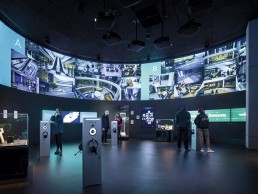
Spyscape, USA
The Spyscape museum in New York City, opened in February 2018, is a new global destination for espionage that marries educational programming with state-of-the-art interactive technology, creating a unique experience for every user.
Designed by Adjaye Associates, with lighting design coming from Brooklyn-based Lighting Workshop, Spyscape was developed in collaboration with expert advisors including hackers and former intelligence agency directors. The inspiration for the museum was to create a ‘premiere spy headquarters’ that allows visitors to deeply engage with the practice of espionage.
Spread across three levels, the 60,000sqft museum includes permanent and temporary exhibition spaces, a black glass bar, flexible event spaces and a rare book store.
The design from Adjaye Associates inverts the traditional relationship between building and town, essentially establishing a small town within a building, as David Adjaye explains: “The exhibition design is set up to be a miniature city in abstraction, with a set of conditions that mirrors the urban experience of discovery, of moving from interior to exterior.”
Drawing from the architectural language of the most prestigious spy organisations, the material palette includes dark fibre cement, grey acoustic panelling and black linoleum. “Many of the materials we used are ones that we typically use for façade systems,” Adjaye continued. “It felt like an interesting way to flip the relationship of the building and city, and to create a counter narrative to the existing glass building, which is all about transparency.
“Because this is a museum about spying, I was interested in obscuring that, and using design to create a dynamic interplay between the obscured and the revealed.”
Throughout, smoked glazed doors, varied lighting strategies, transparencies between floors, and screens and perforations establish spaces that continually shift users’ vantage points, while prioritising the experience of encounter and discovery.
On entering the museum, visitors are guided into a 350sqft multimedia briefing elevator – one of the largest elevators in the world – that orients them to the Spyscape experience as it rises through the building, introducing the world of secret intelligence via an immersive film, developed with the studio that created VFX for films such as Avengers, Blade Runner 2049 and Ex Machina. Visitors are also given a unique Identity Band, which uses RFID technology to personalise their experience.
The elevator brings visitors up to the exhibition level, and opens onto a flexible retail and temporary exhibition space that unfolds beneath a dramatic vaulted LED light canopy. The perimeter curtain walls of the museum feature a playful ‘urban camouflage’ graphic dot and pixel vinyl that obscures views to the surrounding city, partially shrouding the museum interior while also functioning as a solar screen.
Exhibitions throughout are housed in a labyrinthian series of stacked box pavilions, each organised around a unique spy-related theme. The spatial arrangement was designed to play with perceptions, with partially concealed interstitial circulation spaces opening up into immersive, fully interactive multimedia environments.
Each pavilion is distinctive, and crafted around its unique content – one of which being a weathered steel drum detailed with offset panelisation that envelops users in 360 degrees of programmable content.
Throughout the contemporary museum, Spyscape explores spy stories and characters, from code-breakers and spy pilots, to the spycatcher who brought down the FBI’s most damaging traitor, and the teenager who hacked the CIA’s website, with artefacts and multimedia storytelling.
The site also offers immersive experiences to visitors through a series of ‘Spy Challenges’, in which they can test their own spy skills. These range from encryption and deception challenges that allow visitors to test their ability to decode messages “from agents behind enemy lines” and learn the art and science of spotting lies, to surveillance challenges and an exciting ‘Special Ops Challenge’, in which visitors have to negotiate a path through a laser corridor – designed by Atlas AV – against the clock.
The experience concludes with a personal debriefing that analyses each visitor’s unique skill set, where they will learn which of the ten archetypal spy roles they are best suited to, including Hacker, Special Ops Officer, Cryptologist, Intelligence Analyst and Spymaster. This profiling system was developed with the former Head of Training at British Intelligence and top industrial psychologists.
The whole museum was brought to life by a diverse team of curators, designers, educators, programmers and storytellers, with a number of experts recruited to add to its authenticity. “The client brought in a group of expert advisors, including former members of renowned hacking collectives, award-winning investigative journalists and former station chiefs and directors of intelligence agencies to ensure that the content captured the essence of spying today,” Adjaye explained.
Adjaye Associates has an extensive portfolio of museum projects, including most recently the stunning Smithsonian National Museum of African American History and Culture (NMAAHC) in Washington D.C. Yet while Spyscape is smaller in terms of its size and grandeur, it allowed Adjaye to explore different technological aspects.
“My firm has always been interested in exploring the evolution of the museum and educational spaces, and in thinking through how our relationships to these types of spaces are shifting in the 21st century,” Adjaye explained.
“The NMAAHC thought through this shift through the lens of narrative experience and identity, but of course technology is now also integral to our approach to these typologies. So, it was exciting to have this project because it allowed us to engage deeply with the interactive technologies, and to think through its relationship to architecture and more traditional modes of exhibition design.”
Lighting designers Lighting Workshop were brought in to work on the project through their connection with construction consultancy Gardiner & Theobald, and Steven Espinoza of Lighting Workshop was very keen to get involved. “We’ve collaborated on quite a few projects with G&T, so when the RFP landed on our desks, my eyes lit up,” he said. “I dove at the opportunity, and we were thankfully awarded the project.”
Adjaye Associates had already been working on their design for a while by the time that Lighting Workshop came on board, but Espinoza was able to find areas in which he could emphasise or amplify the architect’s vision.
But while the opportunity to work on a museum dedicated to the top secret world of espionage might bring to mind the likes of James Bond or Mission: Impossible, Espinoza instead believes that a more serious tone needed to be taken in Spyscape.
“It’s an interesting time that we’re living in,” he said. “The levity that I used to associate with spying during my youth (James Bond, etc) has faded. Spying is a dark topic, and it’s become woven into the 24-hour news cycle. The public are no longer bystanders. Our private lives and data are under constant attack, and Spyscape doesn’t hold any punches when delivering these messages.
“At the same time, David [Adjaye] was able to create moments of intrigue, and has struck a careful balance where, as a visitor you’re never consumed by anxiety, but it’s always present.
“As a lighting designer, my goal is to help support the vision that David created, and I believe we’ve succeeded. Consequently, there are a variety of lighting experiences that range from jaw dropping to inspiring, to covert and confusing. We’re keeping you on your toes, that’s for sure.”
As with any museum, the lighting design had to be flexible throughout, and Espinoza and his team worked to make it so. “Any museum is a living and breathing experience, so we designed the lighting to be incredibly flexible,” he said.
“There are so many rooms and spaces to get lost in, and each has its own personality and therefore, lighting quality. Should an exhibition change or become modified in the future, we want to be able to address that without tearing the whole thing down. It was important to provide a lighting system that is highly flexible in this regard. A highly sophisticated control system was provided to maximise adaptability, and to give us the ability to acutely define how each space feels on a granular level.”
One of the most impressive lighting features is what Espinoza refers to as “the vault”: a series of nearly four thousand suspended tubes created by Arktura, illuminated with Philips Color Kinetics iColor Flex LED nodes and arranged to create a domical vault. “The entire installation is about 100 feet long and 20 feet wide, and each tube is an addressable, colour changing light source,” he explained. “The result is an installation that can become anything between an enormous low-resolution video screen to a uniformly illuminated cloud.”
However, elsewhere in the museum the lighting remains more discreet, instead “dissolving into the architecture”, as Espinoza puts it. “The experience in Spyscape should be about the narrative and the content. In most cases we chose fixtures that would be discreet and well shielded.”
Track lighting throughout the museum was provided by iGuzzini, while Kreon, USAI and Edison Price provided recessed downlighters. Elsewhere, Nanometer’s T24 provided the RGBW cove lighting, while the RGBW recessed floor lighting came from Aldabra’s GX2. Throughout, the lighting complements the architecture, never overshadowing the museum’s design – instead adding to the atmosphere that Adjaye sought to create.
“We looked to support the architecture, and to amplify the multitude of emotions that it evokes,” Espinoza said. “The subject matter here is unsettling, and I believe the architecture and lighting addresses this profoundly.
“The variety of architectural volumes, how they are organised, and how they are illuminated, was carefully planned. Some spaces create intimacy with artefacts, while others can become almost overwhelming in scale. In many instances, technology, including large scale animated lighting gestures, introduces moments of awe that give meaningful waypoints and bring balance to the experience. It’s all very carefully orchestrated. That took a lot of time, patience and coordination.”
Such time, patience and coordination has led to the creation of a truly unique, exciting visitor experience. Where some would associate the world of espionage with the decadent, glamorous life of 007, Spyscape adds a thrilling sense of realism, throwing visitors into the real life world of spying. The design from Adjaye Associates and Lighting Workshop complements this expertly, helping to ensure that Spyscape will no doubt make it onto the already extensive list of ‘to-do’ tourist destinations in New York.



